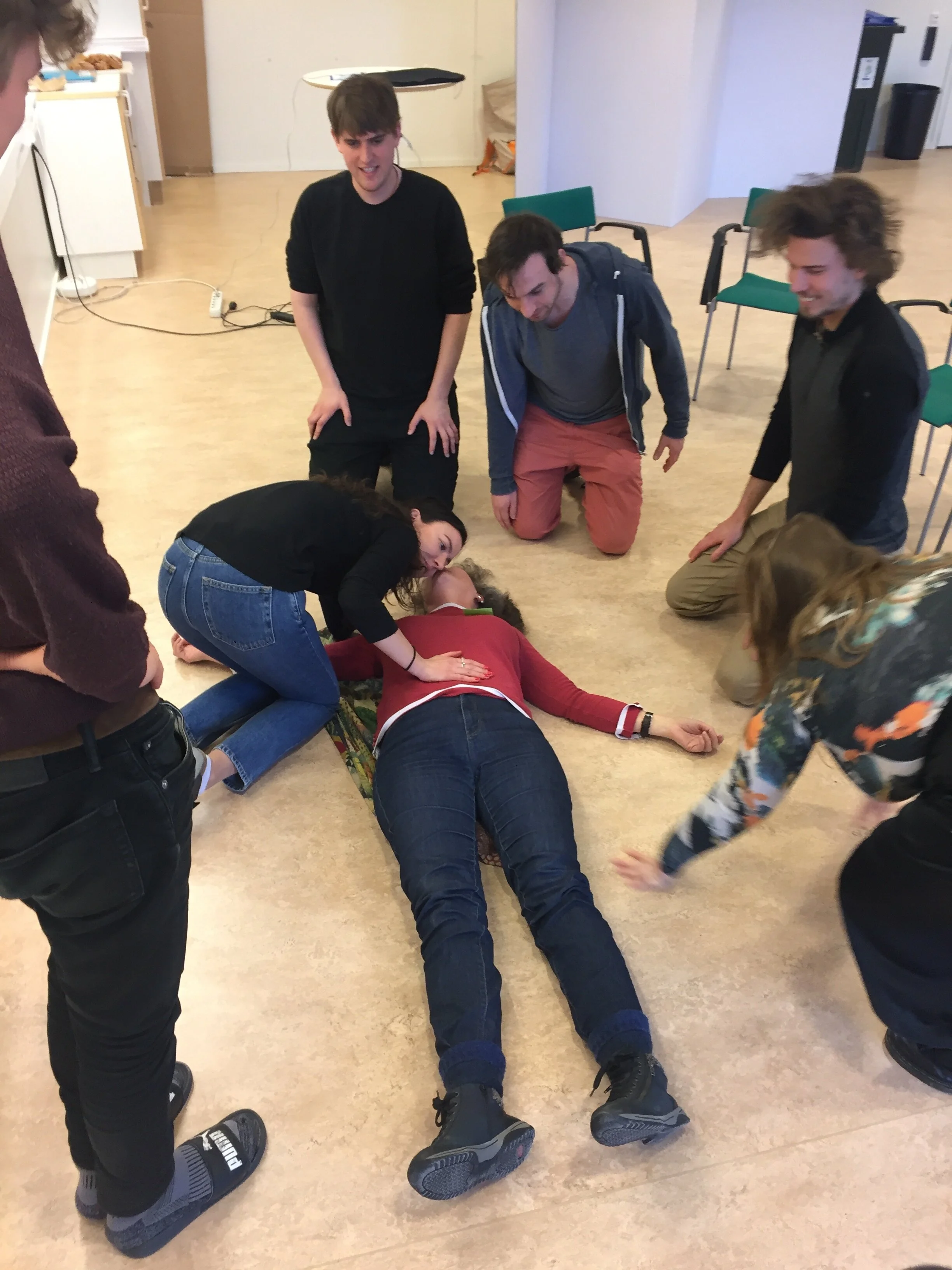
This site is currently in process!
Robert, a future AI that decides on lives
With Robert we were taking a speculative approach on how a digitalized future of health care and saving lives could look like. We created a fiction on what it might look like if it was data deciding on value to be saved or not. Part of this three-week course in Communication Design for co-creation was to explore and design with co-creative methods within a project cooperation with Laerdal Medical on how to improve the chance of survival of people that suffer a cardiac arrest.
More explicitly and according to the brief the objective was to design a way to support dispatchers, who are experts, in assisting bystanders, who probably have never before conducted CPR, via remote communication. Through our process we decided to take a more radical perspective and speculated on how algorithms might influence as we saw it responsive to the challenges and opportunities of the twenty-first century.
Course
Communication Design
for CoCreation,
Laerdal Medical
(Spring 2020, 3 weeks)
Type
Co Creation
Participatory Design
Speculative Design
Medical
Team
Christina Bauer
Oliver Weglinski
Role
Research
Workshop preparation
Workshop facilitation
Concept
Animation
Challenge
In this course we explored alternative ways, through traditional and new media, to visualize and communicate information with focus on Service Design and to provide training in running co-creative design processes together with users and stakeholders. During this course we researched towards improving the chance of survival of people that suffer a cardiac arrest. In particular our objective was to design a way to support (remote) experts in assisting (untrained) bystanders to perform successful resuscitation. In our research we discovered more and more interest in creating future scenarios and discussing the development of our health care system. We wanted to show that we see design as something that requires foresight and taking a stance on what the future will look like.
Outcome
We used fictions as an exploratory medium to materialize a potential (dark) future scenario. To illustrate a future, in which we completely stop looking at humans as what they are: people, but more as a data collection that ranks us according to our “value”, we visualized the two-sidedness that often can be experienced in technology already today. Technology shows itself in the most beautiful ways, but what stands behind is pure calculation, these two faces are “personified” in Robert. To materialize our concept we created a map, in which all the connections and flows are shown, as well as an animation, showing what is happening in the background, who or what stands behind Roberts voice? As an outcome the process itself can be seen as project focus, as the learnings regarding co-creative methods were very important.
Future fiction on health care: Robert as a system
With Robert we created a project that is supposed to provoke to debate and discuss a future, before it happens. To get an idea, even though it is a hypothesis, we want to talk about what is desirable and what isn’t, what we want to aim for and what should be avoided. We didn’t create a future solution, we want to trigger questions, thoughts, ideas and opportunities and experiment with what our values and beliefs are and rethink how we create certain future scenarios and try to imagine how we can re-imagine the reality we are living.
System Map
We created a system map on how future ai could function in a dispatch system from the moment of the emergency call, to support in resuscitation, to the possibility of getting help through an ambulance. in a world that is fully data driven and where people are their data.
Robert behind the scenes
With robert we created a scenario in which your emergency call is directed by an ai, that calculates what kind of help and at what time you will receive help. the situation assessment through face scan is very accurate, but then it depends on your socio-economic background, your health status, your value for society, if an ambulance will be dispatched for you or not.
In the process it was very interesting for us to think about what the scenario might look like, what kind of factors might play a role. But also what an interface might look like, that is fully autonomous and anything but human centered, but purely data driven.
Process

Methods
In this course we learned, discovered and developed different co-creative methods that defined our project. We explored the “Silent Game”, which illustrates different ways we use to communicate without talking; the “Dancing game” and “Bodystorming”. Within co-creative activities with users and stakeholders, we analyzed and managed possibilities and challenges that emerged during our co-creative process. By reflecting on the used methods and analyzing the experienced, we were able to articulate a possible future direction.
At the very beginning of the course we tried to find a generally applicable definition of what a co-creative process means. It arose from the classic user involvement, where we are getting feedback during the process on a certain product and see on where we can still improve on our ideas. But more and more we want to bring different experts together, using the creative energy of many, combining different backgrounds, values and knowledge. Especially when we are directing towards a more speculative and future focused design approach we bring in a lot of our own values into our concepts and are mostly having a quite narrow perspective on things as we are including a lot of personal experiences or un-experiences.










